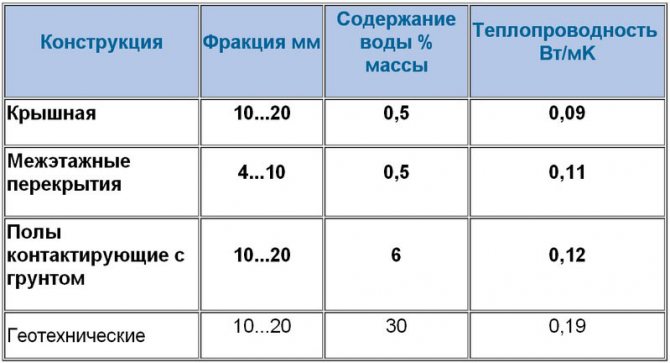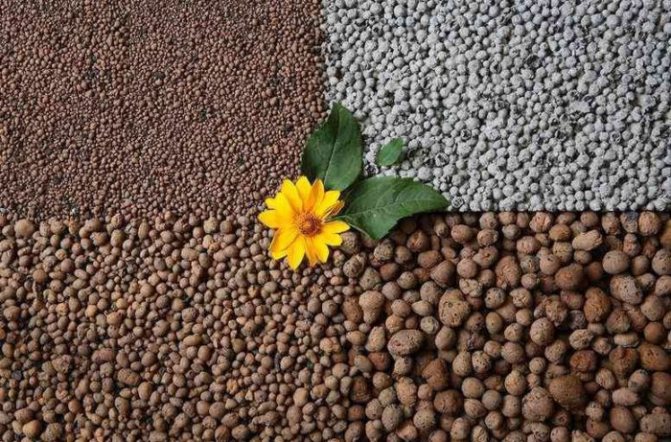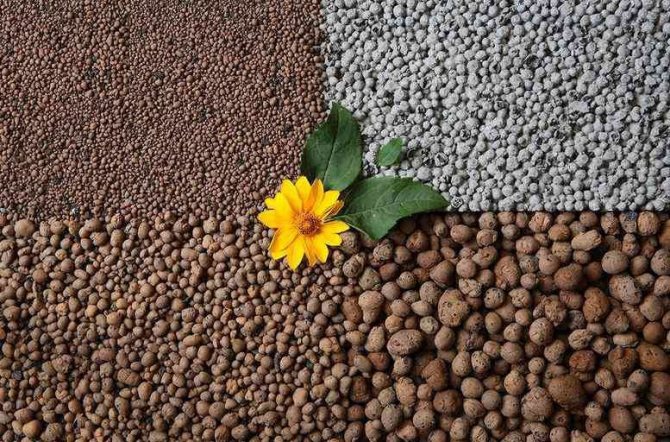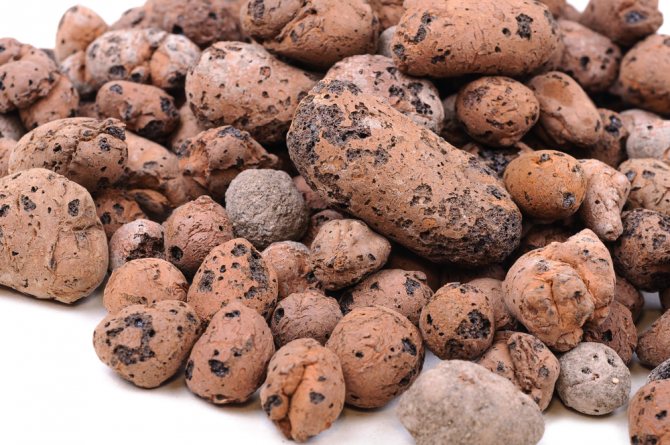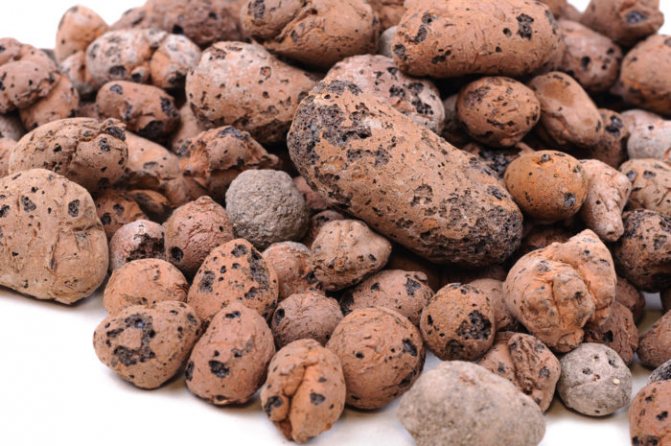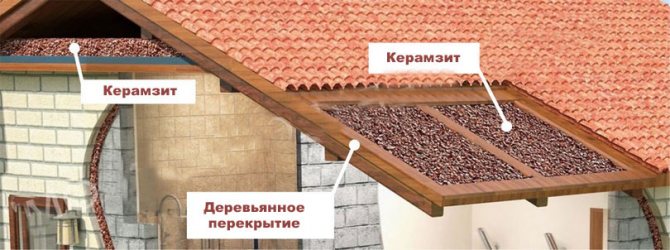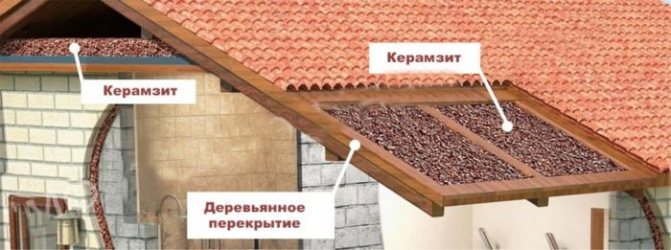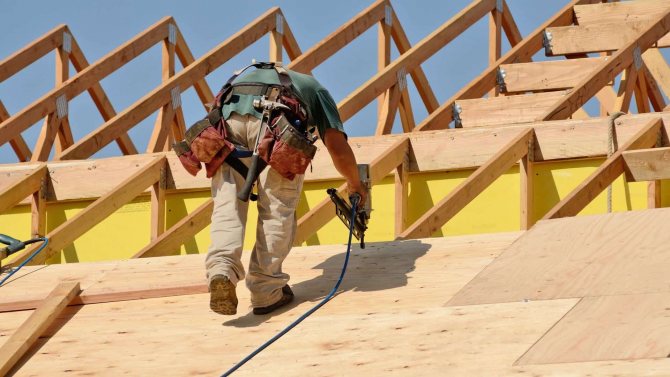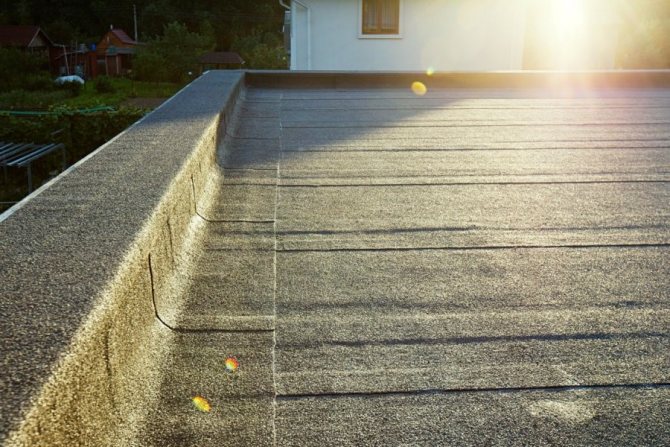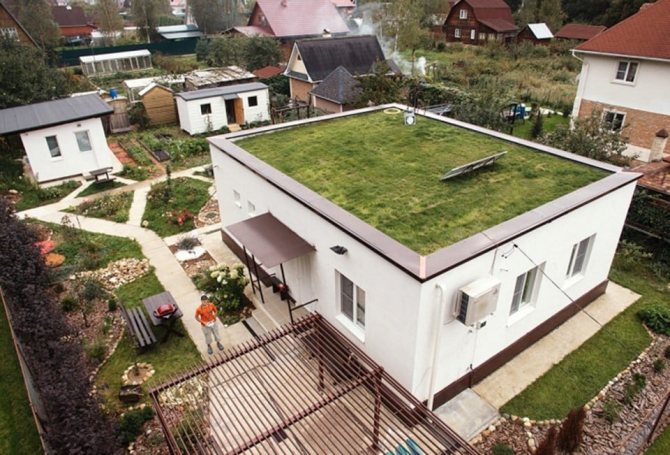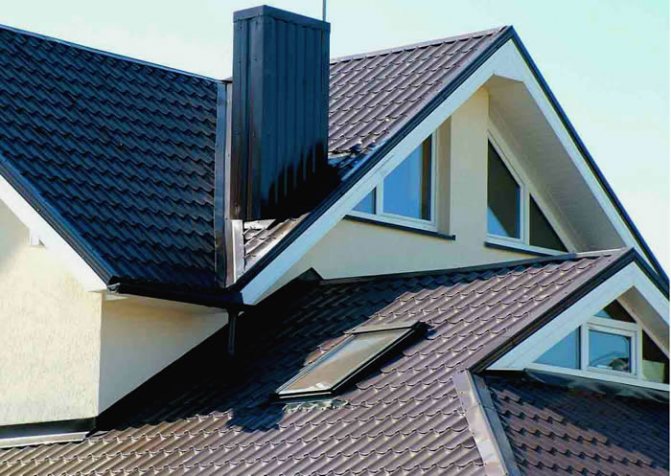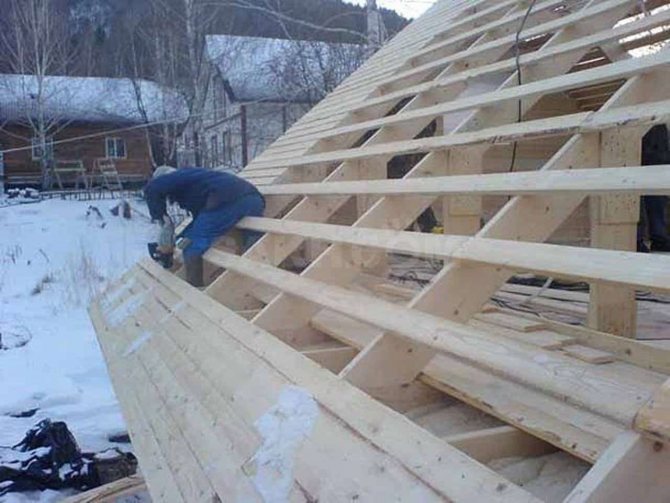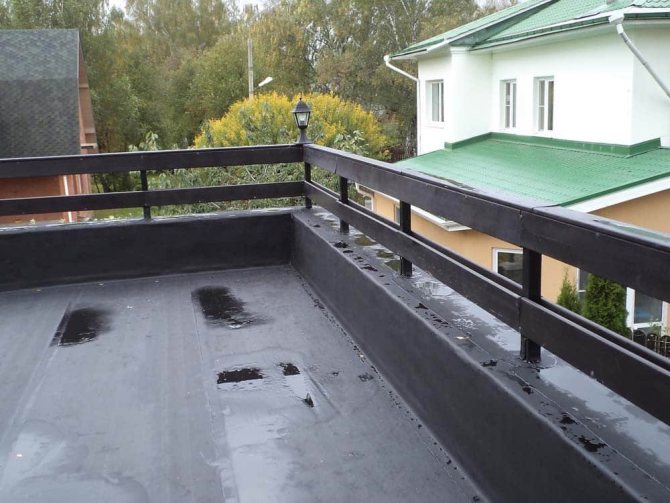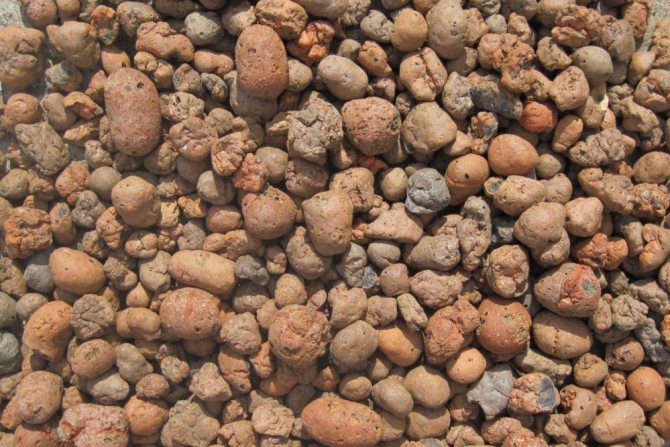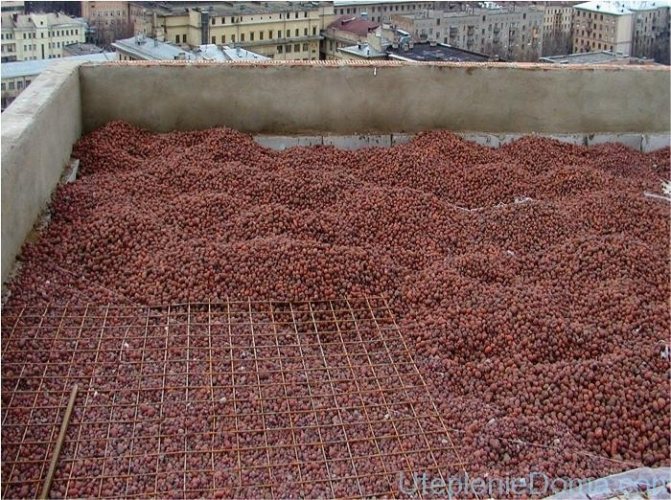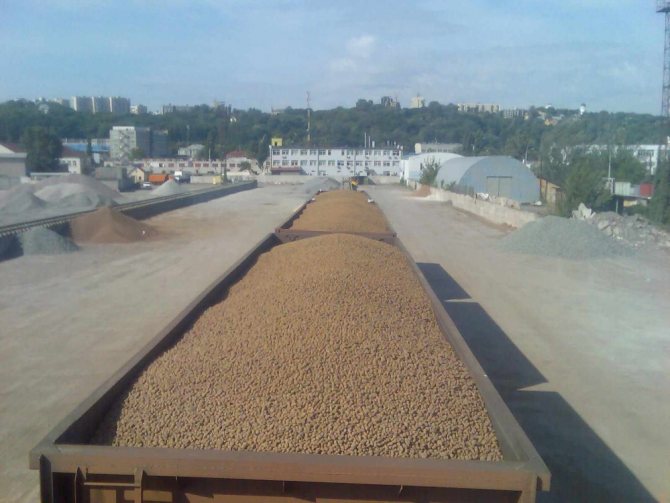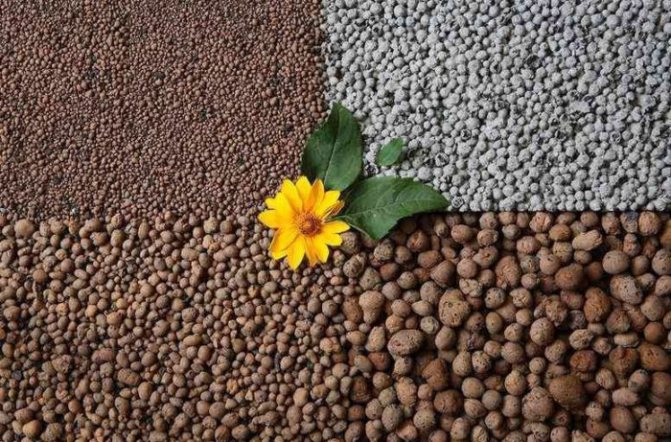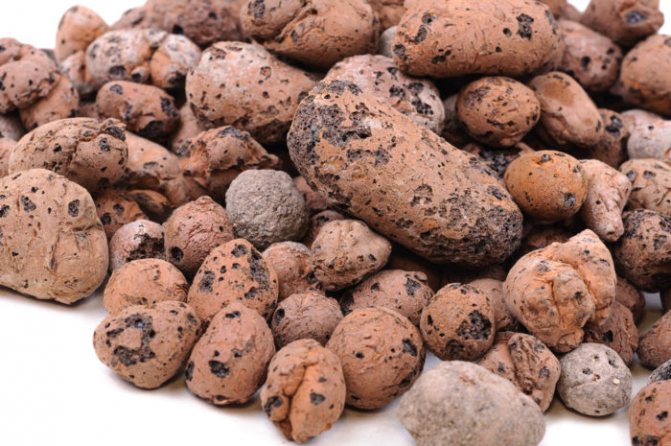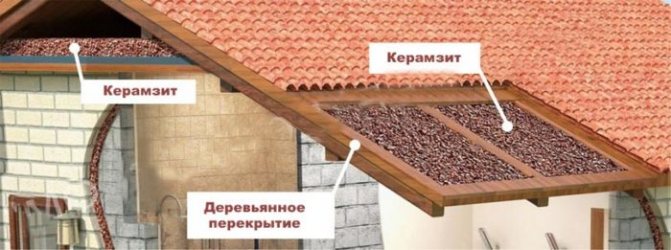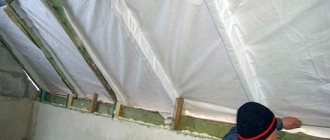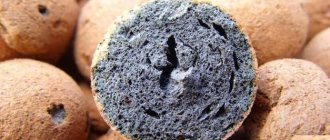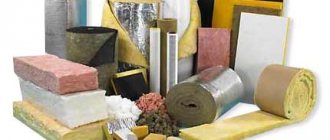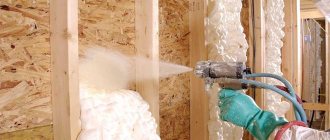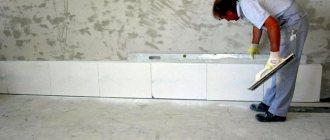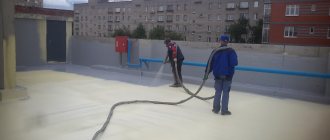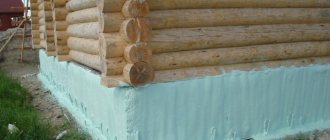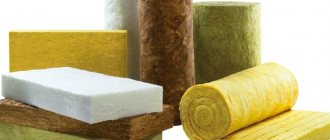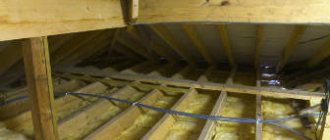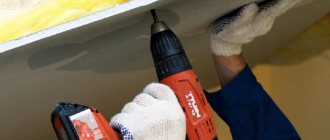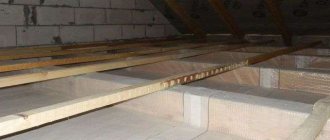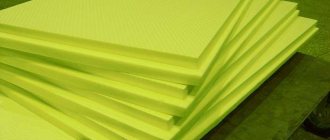The roof is one of the elements of the building envelope. Its main function is to provide a heat-insulating barrier space that protects the interior of the building from harmful atmospheric influences (rain, snow, wind, hail, etc.). Heat loss in a building with an uninsulated roof is about 15-30%.
Therefore, properly equipped roof insulation will significantly save on heating.
More than half a century of experience in insulating roof structures with expanded clay has shown that this is one of the most versatile, effective and reliable methods.
What is expanded clay?
Expanded clay - lightweight and highly porous thermal insulation materialwith a dark brown shell. It is made by firing clay or shale at a temperature of 1050-1300 degrees Celsius for 25-45 minutes. With different modes of processing of a clay base, expanded clay can be obtained with a bulk density from 0.35 to 0.6 g / cm3.
Depending on the shape, there are three types of it:
- Expanded clay gravel. Cellular elements have an oval streamlined shape. The grain size is 5-40 mm... It is used when the required thickness of the insulating layer is more than 5 centimeters.
- Expanded clay crushed stone... The dimension of the elements is similar to that of expanded clay gravel. Has a cubic shape with sharp protruding corners and edges. This type of expanded clay is obtained by crushing large pieces of expanded clay.
- Expanded clay sand. The grain size is in the range 14-50 mm... Small dimensions allow the use of expanded clay sand with a thickness of the insulating layer not exceeding 5 centimeters. Also used as an aggregate for concrete and other types of mortar.
Types of expanded clay for roof insulation
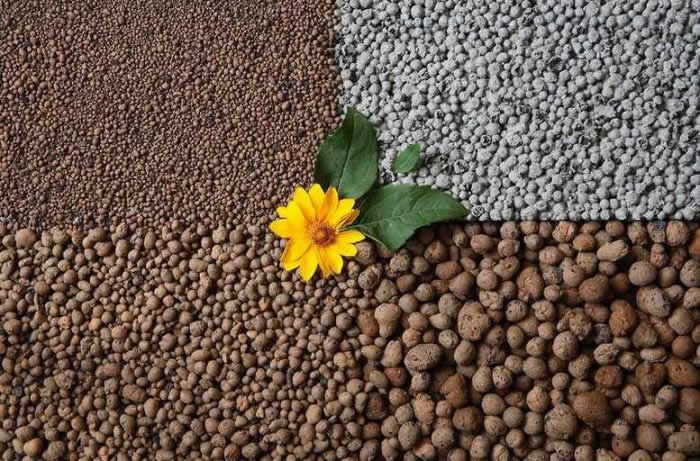
Builders most of all use the following types of expanded clay for roof insulation:
- Crushed expanded clay - granules of a rather large size, not exceeding 4 centimeters in diameter. It is used for insulation of roofs, floors and walls.
- Gravel expanded clay - large granule sizes, up to 4 centimeters.
- Sandy expanded clay - fine-grained particles up to 5 millimeters in size. It is used to insulate a layer about 5 centimeters thick.
If there is not enough money to hire a specialist, then you can do this installation yourself. Before you start working, you need to familiarize yourself with the insulation process. There are several stages of it:
- interior styling,
- installation of vapor barrier,
- installation of insulation,
- surface finishing works.
Advantages and disadvantages of expanded clay
Expanded clay is much more profitable in comparison with widespread plate heaters such as mineral wool. When insulating a roof with expanded clay, no special skills and abilities are required. Using bulk insulation does not require adjustment of elements and additional fasteningth. Roof insulation with expanded clay has a number of the following advantages:
- Expanded clay - highly environmentally friendly material... It does not decompose and does not emit toxic gaseous fumes hazardous to human health.
- Not edible for rodents.
- Has an increased frost resistant... It can withstand up to 25 complete freeze and thaw cycles.
- Refractory and fireproof material.
- Excellent warmth and sound insulator.
- When insulating wooden surfaces with expanded clay, their service life increases to 50 years.
- Easy material.
- Resistant to chemical attack.
- Cheapness, a cubic meter of slab insulation will cost several times more than expanded clay of the same volume.
- When using high-quality expanded clay insulation, the thermal conductivity of which is 0.07-0.16 W / m, heat loss is reduced by 70-80%.
Expanded clay - bulk material, it fills almost the entire volume provided. This, in contrast to slab insulation, makes it possible to most effectively insulate small cavities.
NOTE!
It is not recommended to lay expanded clay on a plank base without a backing... Small crumbs and dust can enter the living space through the gaps between the boards.
Roof preparation
When insulating with expanded clay, the type of roof must be taken into account. It is easier to insulate flat structures; on pitched structures, you will have to make special pockets from rails that prevent the bulk material from rolling down.
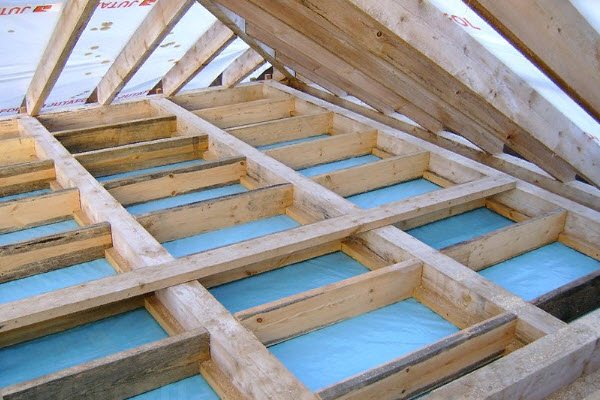

The work is carried out according to a single scheme:
- The surface is cleaned from debris, especially from sharp elements that can damage the vapor barrier layer;
- Vapor barrier is being laid;
- Insulation is poured;
- Waterproofing is spreading;
- Finishing material is being mounted.
Disadvantages of expanded clay insulation
- The lightness of the material is relative... So, when installing thermal insulation requires a layer of expanded clay 10-40 centimeters... Even such small in weight porous elements in such a volume will create a significant load on the underlying supporting structures.
- Expanded clay highly absorbent, which negatively affects its thermal insulation properties. It is imperative to arrange layers of hydro and vapor barrier.
- Fragility material can lead to mechanical damage to the integrity of the granules. Water will enter the unprotected pores and voids, which will lead to the loss of the positive properties of expanded clay.
The main stages of roof insulation with expanded clay
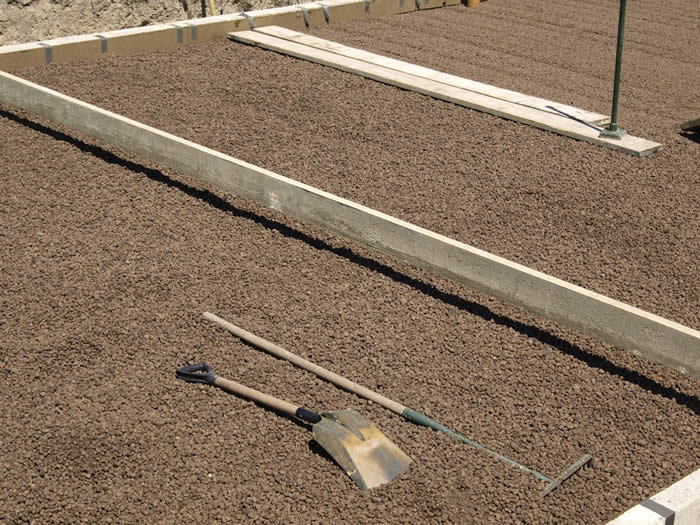

- The thickness of the layer for insulation with expanded clay must be on average 25 centimeters. Gently and in the required amount is poured onto a layer of vapor barrier film.
- If there is a desire to strengthen the sound insulation, then the layer should be made even thicker. It is important to know that when increasing the layer, it is necessary to calculate the load on the floor. In this case, it is better to comply with the specified norms.
- To eliminate voids between the granules, it is necessary to level the layer well, followed by careful compaction. You can do this work with a special machine, but if there is none, then you will have to do it by hand. For better rigidity, you can fill in the screed. This method perfectly levels the surface and complements the strength throughout the layer.
- Several channels should be made between the inner and outer layers. Then excess moisture will be removed and access to air circulation will be obtained.
- Then roofing material is spread on the layer of insulation, necessarily with an overlap and without gaps. Glue the seams with bituminous mastic.
- At the last stage, tiles or shingles are laid.
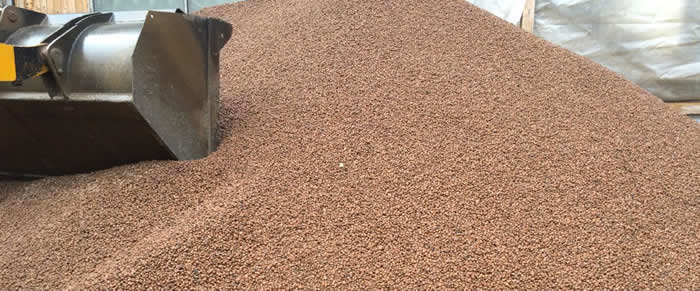

Many construction hypermarkets and shops are engaged in the sale of expanded clay. Building materials are also sold there, which are necessary for thermal insulation of the roof with expanded clay.
How to determine the optimal insulation thickness?
In accordance with regulatory documents, the required thickness of the thermal insulation layer depends on climatic zone, in which the building is built, and the area of the room to be insulated.
The climatic zone is determined by special maps, they can be found in SNiP or TKP on heat engineering.
The required thickness of the insulation depends on the value thermal resistance of the calculated structure (R)... This is a normative value, depending on the climatic region, as well as on the type of insulated structure.
The values for floors, walls and ceilings will vary considerably. If you do not know what layer of expanded clay is needed for roof insulation, then we suggest you use the formula below.
Roof insulation with expanded clay: layer thickness and calculation formula (P):
P = R * k
Where k is the coefficient of thermal conductivity of the material. For expanded clay, its value is 0.16 W / m * k.
Material disadvantages
Fragility is one of the main disadvantages of expanded clay. For this reason, it must be handled very carefully. When filling the material, some of its elements are damaged and lose some of their properties.
Expanded clay should be used only as a dry embankment. It cannot be added to mortar or cement. It won't do any good.
Expanded clay does not give off absorbed moisture. It absorbs even small drops of water quite actively. When insulating a roof with expanded clay, this property can cause significant problems.
But you can still use this material even in the absence of building skills. Anyone is able to perform high-quality thermal insulation in a short period of time.
Alternative types of insulation
Expanded clay is not the only widespread thermal insulation material used in roofing structures. Let's consider the most common options:
- Expanded polystyrene, better known as a type of foam. The heat protection of such a material is much better than that of wadded insulation. The layer of polystyrene foam insulation will be much thinner. Styrofoam does not absorb water, quite tough and durable. The use of specialized additives makes it possible to achieve an increase in fire resistance. But, if the material nevertheless catches fire, the release of poisonous gaseous substances, dangerous to human health and life, will occur. Unlike expanded clay, mice and rats like to chew on styrofoam.
- Basalt wool and mineral wool. The fibrous structure of this type of insulation ensures its high air saturation. This allows them to be used as thermal insulation material. When laying fiberglass, you will need additional protection: gloves and a respirator. Among the shortcomings can be noted susceptibility to decay, as well as high cost.
- Polyurethane foam. Foam insulation made directly on the construction site. Application is carried out with a special gun. Expansion of the material after application allows you to create a monolithic insulating structure. It lightweight and fire resistant... The service life is about half a century. The disadvantage is the need to use specialized equipment and an experienced team for quality work.
- Ecowool. Material containing 80% cellulose fiber and 20% refractory and antiseptic additives. Possesses good heat and sound insulation... Ecowool forms a seamless coating that eliminates cold bridges. Service life - over 50 years.
The advantages of expanded clay
This insulation material is the most economical. Using expanded clay, you can achieve high heat and sound insulation at low financial costs. This material is fireproof and environmentally friendly, since it is made from several types of clay. The service life of expanded clay is quite long, since moisture condensation does not occur during its use.
This type of insulation has a porous crumbly structure, so rodents do not appear in it. One of the most important positive qualities of expanded clay is its high resistance to high temperatures. Due to this, it can be used in regions with extreme climatic conditions. This insulation also provides a high level of sound insulation, which is very important when insulating the upper floors of buildings.
Environmental safety is one of the most important properties of any building material. For the production of expanded clay, completely pure clay is used, without the use of all kinds of chemical additives. Therefore, it is completely safe for human health.In the manufacture of expanded clay, the granules of which have an oval shape, clay is fired.
When using expanded clay gravel, it is possible to fill in different cavities. In this way, roof insulation is created. Quite often, when insulating the roof, expanded clay gravel is mixed with foam crumbs. This is done to increase thermal insulation.
To insulate a flat roof with expanded clay, it is necessary to lay the prepared material on the floor slabs, and then cover it with rolled roofing felt or a similar material. Further, if desired, you can lay paving slabs on top.
Roof insulation with expanded clay: technology and features
Necessary tools and materials:
- Vapor barrier;
- Waterproofing;
- Rack used for tamping and leveling;
- Shovel;
- Buckets;
- sharp knife;
- expanded clay.
Before insulation, some preparatory work should be done. They include leveling and cleaning the surface to be covered, as well as filling gaps and cracks. You can read more about roof insulation here.
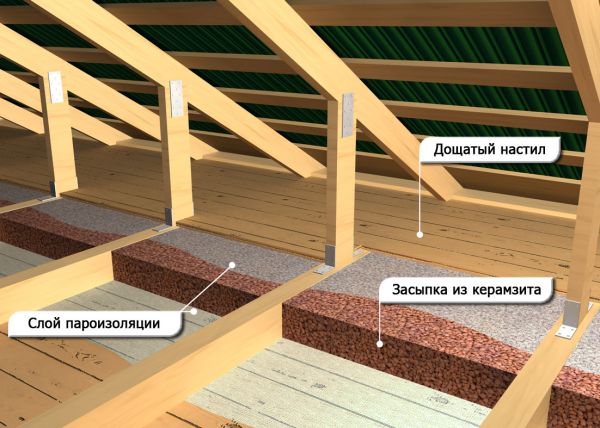

Flat roof roofing pie
If laying is done on metal, should be cleaned from oxidation products, and painted with an anti-corrosion compound.
- First layer vapor barrier is performed on the base. Both membrane and conventional polyethylene films can be used. The use of a vapor barrier with one foil side will provide an additional effect of heat reflection into the room. Any vapor barrier material is laid overlapand also stretches tight. The joints are glued with specialized tape.
- Warming with expanded clay is carried out in strips. To do this, guide rails are attached to the vapor-insulated base with a step of 2-3 meters. The thickness of the expanded clay layer must correspond to the calculated value... A smaller layer will not provide the necessary thermal insulation, and a thicker one can lead to the destruction of the supporting structure to be covered.
- After filling the entire area, alignment and compaction expanded clay layer.
- On top of the expanded clay, a layer of waterproofing is laid or a cement screed is arranged, which improves the strength and rigidity of the structure.
- To assess the quality of the performed thermal insulation work, it is required to warm up the room to a certain temperature, while closing all the doors and windows.
- After a couple of hours, check the thermometer readings before and after. If there is a significant decrease in temperature, then you need to inspect the insulated surface for gaps and cracks.
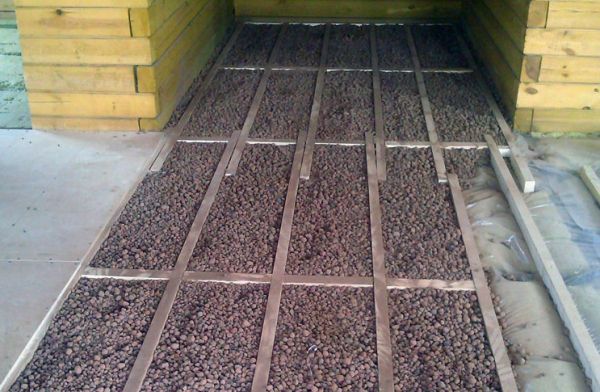

The lathing of the floor allows you to divide expanded clay into separate cells and serves as logs for the subfloor
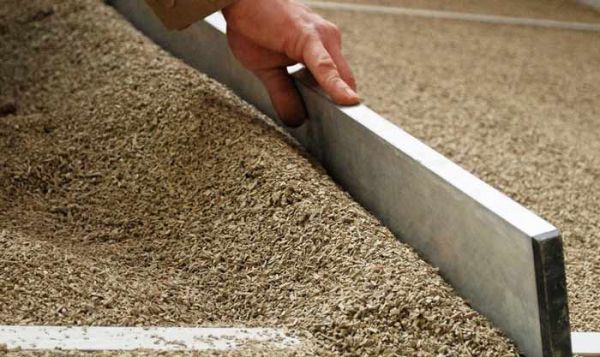

Leveling a layer of expanded clay using a building level
CAUTION!
Laying and compaction of expanded clay must be done very carefully so as not to damage fragile porous elements.
Expanded clay backfill and leveling
The heat insulator is covered with an even layer, leveled with a rule, carefully rammed to reduce voids between the granules. Use a special vibrator or roller made from trimming thin logs.
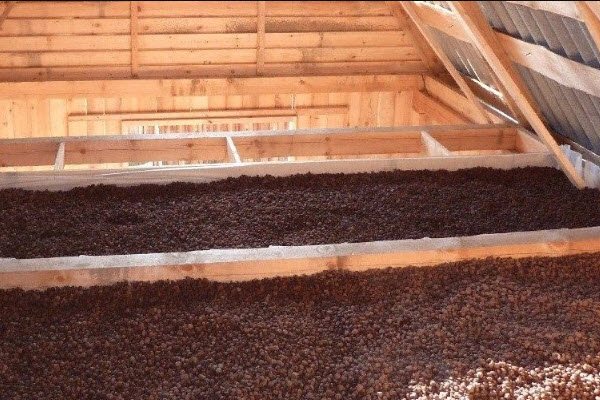

Backfill work is easy to carry out on a flat roof, expanded clay will not just lie on the slope, so you need to prepare the crate in advance by laying jumpers between the support beams. The work is carried out in the same way as backfilling the frame walls - a heat insulator is gradually added and the structure is immediately sewn with boards.
During backfilling, the material must be dry. So that it does not get wet in the future, waterproofing must be overlapped on top. The work is carried out from the bottom up, all joints are well glued. At this stage, roofing material laid in 1-2 layers is often used, the joints of which are glued with bitumen mastic.
Technology
Warming with expanded clay is a process that does not require special knowledge, therefore it can be done independently. The main thing is to take into account the structural features of the building, walls, roof slope and know the correct sequence of work.
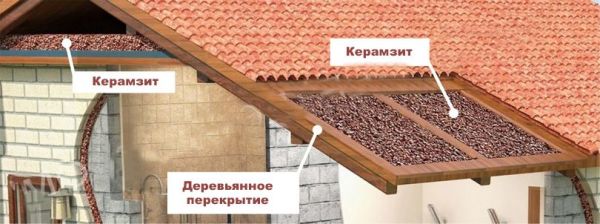

Traditional technologies for thermal insulation of the roof assume a certain procedure: first, the inner sheathing is done, then the vapor barrier, a layer of insulation is laid, waterproofing, and the entire roof covering is completed. When using expanded clay, the essence of the process is the same.
Thermal insulation of a ceiling in a wooden house
When insulating wooden structures, it is important to protect the surface from moisture ingress. For this, a vapor barrier is laid. Foil, foil-clad isolon, roofing felt or plastic wrap are suitable as a vapor barrier material.
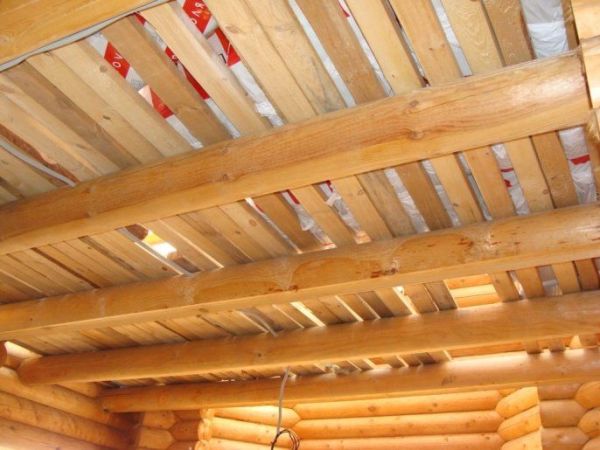

The metallized side of the vapor barrier should be directed towards the interior of the dwelling. The laying of the material must be made with an overlap, with an approach to the wall of about 10-15 cm. To exclude the possibility of moisture penetration, all seams and joints must be glued.
If foil vapor barrier is used, then metallized adhesive tape is used to process the joints, the film can be glued with ordinary tape, and rubber-bitumen mastic is used for roofing material.
The vapor barrier should cover the floor beams.
Then a layer of expanded clay is poured and leveled. Sometimes experts advise to lay a small layer of soft clay for additional heat and sound insulation before filling the vapor barrier. The recommended thickness of the expanded clay layer is 14–16 cm.
It is important to leave a gap between the insulation and the future floor so that during operation there is no squeak from the friction of expanded clay granules against each other.
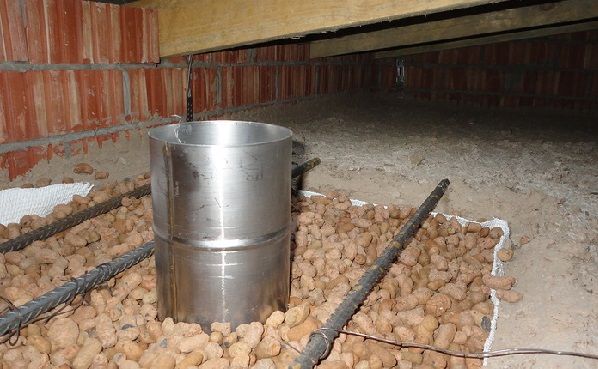

The filling of the material must be done very carefully so that the granules are not damaged. Otherwise, the thermal insulation characteristics of the insulation layer will decrease.
Expanded clay absorbs moisture well, which makes it very heavy. Therefore, a second layer of a moisture-repellent coating is laid on top of the insulation, or a cement-sand screed is made.
The final stage of work is the installation of the floor covering.
Filling a wooden ceiling with expanded clay, it is necessary to take into account the strength of the structure. The use of expanded clay to insulate a false ceiling in a wooden house is permissible only with a large margin of safety for the fastening. For example, if there is an additional crate. Otherwise, the structure may not be able to withstand the load.
Laying on a reinforced concrete base
If there are reinforced concrete slabs on the roof of the upper floor, the thermal insulation process is simplified. In this case, the bottom layer of vapor barrier is not needed. A layer of expanded clay gravel is poured onto concrete slabs, compacted, and, if possible, a screed.
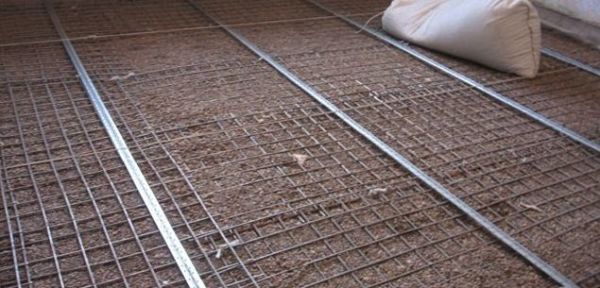

The screed gives the necessary rigidity, levels the surface for laying the roofing felt roll carpet. It is important to provide for ventilation ducts to remove excess moisture.
If desired, any waterproofing materials, paving slabs can be laid on top of roofing material, which increases the service life of roofing structures. In Germany, roofs are very common, the covering of which takes place in a similar way, but instead of paving slabs, a lawn carpet is used. They call such structures "green roofing". In conclusion, I would like to remind you that high-quality roof insulation depends on the materials used, the correct calculation of the supporting structures, the slope of the roof, and good waterproofing.
Heaters
58 votes
+
Voice for!
—
Against!
To ensure that the house is always warm and cozy with the onset of winter, it is necessary to take care of the roof insulation in advance. Today, more and more people choose expanded clay as insulation.It is widely available and inexpensive, as well as environmentally friendly and has excellent performance.
- What is expanded clay, its advantages and disadvantages
- Tools and materials required for roof insulation with expanded clay
- Steam and waterproofing for expanded clay
- Roof insulation with expanded clay
What is expanded clay, its advantages and disadvantages
Expanded clay is a light, porous material in the form of a small granule size obtained by firing clay. It has gained popularity among both professional builders and DIYers, thanks to the following technical indicators:
- high heat and sound insulation;
- frost-resistant qualities;
- fireproof qualities;
- strength, non-susceptibility to decay;
- long service life, non-susceptibility to temperature extremes.
Expanded clay, the price of which is much lower than the price of other heat-insulating materials, is able to serve, in contrast to them, for many years. Its main advantages are:
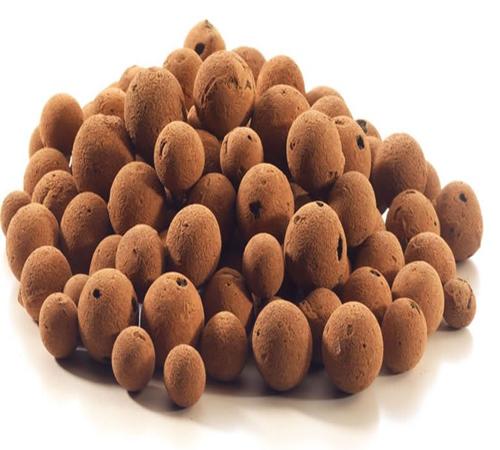

- high thermal conductivity;
- light weight;
- not susceptible to the effects of chemically aggressive environments;
- does not emit toxic substances into the atmosphere;
- it is the only heat-insulating material, when working with which special knowledge, skills and experience are not required.
But this material also has its drawbacks, although there are few of them:
- in order to achieve a high level of heat and sound insulation, you need to lay out the material with a rather thick layer;
- not resistant to moisture, therefore, when insulating damp rooms, a special film for waterproofing should be used;
- a rather fragile material, and damage to the granules leads to a decrease in the quality of thermal insulation.
Tools and materials required for roof insulation with expanded clay
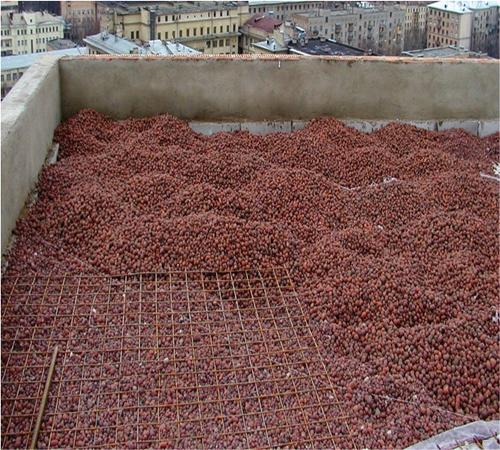

In order to insulate the roof yourself, you will need the following materials and equipment:
- expanded clay on the roof;
- shovel and buckets;
- a log or a stick, in order to tamp the layer of insulation, and a rail to level it;
- waterproofing film;
- roofing material in rolls;
- sharp knife;
- tiles or shingles for outdoor covering.
Steam and waterproofing for expanded clay
Steam and waterproofing of the insulating layer is an important stage in the arrangement of the roof, which in no case should be overlooked. As mentioned earlier, expanded clay is able to absorb moisture. At the same time, its thermal insulation qualities deteriorate sharply, and it itself becomes much heavier than in dry form. This can lead to sad consequences, up to the collapse of the floor. Thus, if the expanded clay layer is allowed to get wet, the service life of the roof can be sharply reduced, and repairs will be required much earlier than planned.
None of the existing types of thermal insulation materials can properly protect the room from the cold, if it itself is not protected by steam and waterproofing. The vapor barrier material is usually installed from the inside of the room, because it protects the insulation from vapors arising inside the room, and the waterproofing is mounted from the outside, because it protects the insulation from moisture coming from the street.
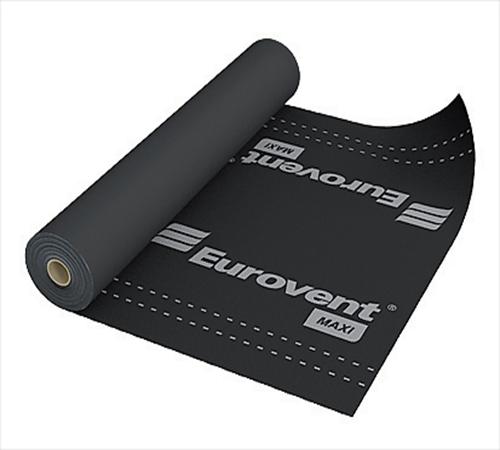

The most common waterproofing materials are films and membranes. Also, materials such as styrofoam, plastic wrap, foil, glassine are also very often used.
Styrofoam is a type of foam and has excellent vapor barrier properties. Glassine is a bitumen-impregnated roofing board. It is sold in rolls and is very good for waterproofing roofs. Foil and plastic wrap are more often used to protect against condensation, because they do not accumulate liquid.
Roof insulation with expanded clay
Most often, when insulating roofs, builders use the following types of expanded clay:
- expanded clay crushed stone is a large material with granules up to 4 cm in size. Equally good for both roof insulation and floor and wall insulation;
- expanded clay gravel is also coarse-grained material, the granules of which also reach 4 cm in size and have an angular shape;
- expanded clay sand is a finely dispersed material, the particles of which are no more than 5 mm in size. It is used as thermal insulation in which the layer thickness does not exceed 5 cm.
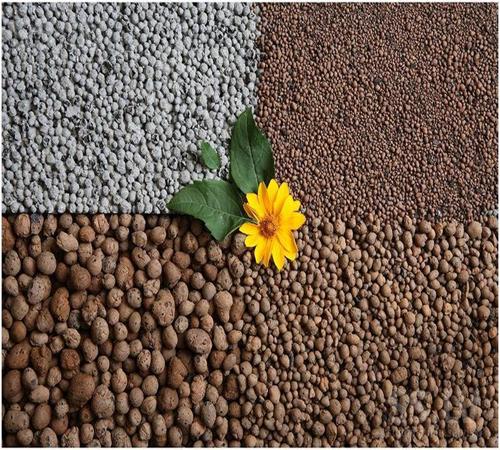

It is quite possible to insulate the roof on your own, if there is no way to pay specialists.
Before starting work, it is necessary to study some features of the warming process. First of all, it is worth paying attention to the design features of the structure, its walls and roof. The insulation process should consist of several stages:
- inner lining;
- vapor barrier;
- laying insulation;
- surface finishing.
Description of work:
- When insulating a roof with expanded clay, the thickness of the material layer should be 25 cm. It is poured directly onto the vapor barrier film in the required amount quickly and accurately to avoid damage to the granules.
- For good heat and sound insulation, it is better to pour a thicker layer, but at the same time it is important not to forget about the maximum load that the roof can withstand. In this matter, it is better to stick to the golden mean.
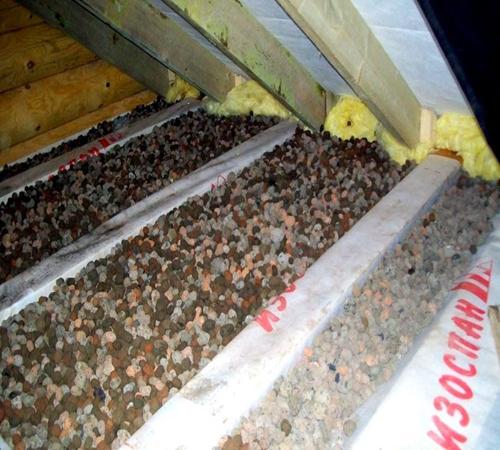

- Then the expanded clay is carefully leveled and compacted so that as few voids as possible remain between its particles. This is done either by hand or using a special machine. It is advisable to make a screed on top of the first layer, to give additional rigidity and strength to the entire structure, as well as to level the surface.
- Also, between the outer inner layers, you should equip several channels through which air will circulate and excess moisture will be removed.
- Further, a roll roofing material is laid directly on the insulating layer, which will press it down with its weight. It should overlap and have no gaps. At the same time, for the tightness of the seams, it is better to isolate them with construction tape or bitumen mastic.
- The next step is to lay tiles or tiles.
Buy expanded clay offer many firms selling building materials, as well as shops and construction hypermarkets.
How to insulate a roof with expanded clay: the main stages of work


Today, correctly performed insulation works are of great importance for maintaining comfort and warmth in the house. Insulation of walls, foundations, floors, roofs is an integral part of construction work. Roof insulation takes a special place. They insulate it for several reasons. Firstly, a layer of thermal insulation material helps to maintain an optimal microclimate, in particular temperature and humidity, in the house itself. Secondly, thermal insulation prevents condensation from forming inside the building. Condensation can contribute to the gradual destruction of the entire structure, its freezing, as well as the appearance of molds, microorganisms, which can negatively affect the health of residents.
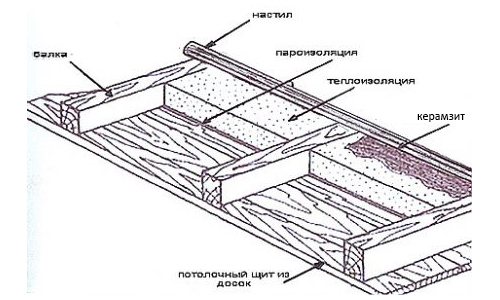

The scheme of insulating the attic floor with expanded clay.
The roof is the first barrier between outdoor air and rooms. The roof of the house protects from cold wind and precipitation. When performing insulation work, it is important to remember that, in addition to thermal insulation, you will definitely need to waterproof the roof to protect it from moisture. You can insulate the roof of a house with a variety of materials: expanded polystyrene, foam, foam, mineral wool, glass wool and expanded clay. The last option is one of the simplest and most common. Get acquainted in more detail with how the roof is insulated with expanded clay, with the technology of insulation, the advantages and disadvantages of this material.
Material properties
Since expanded clay is a material with a natural base, it has strength, durability, which is absent in synthetic materials.Its service life is an order of magnitude higher than wood heaters. Another plus is that rodents do not start in its layer.
Clay serves as a raw material for the manufacture of expanded clay, so the process of decay is not terrible for it. Its structure cannot be changed by low temperatures in severe frosts or high in heat. It is not destroyed by moisture.
Expanded clay is obtained by melting, firing clay. For this, only certain varieties of it are selected, pre-dried and crushed.
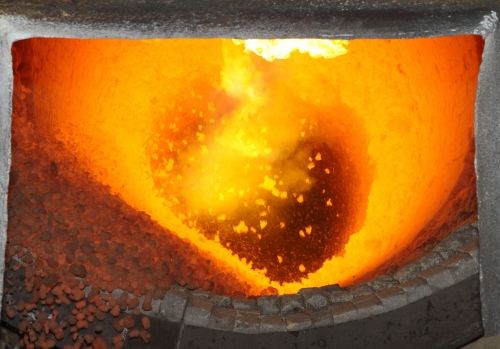

Raw materials are loaded into a drum-type furnace that rotates at a certain speed. Heated air is supplied to the oven. When moving down the drum, the clay begins to stick together into lumps, cakes, and rotation gives it a rounded shape.
Pros and cons of thermal insulation with expanded clay
Insulation of the ceiling with expanded clay has a number of advantages:
- The heat insulator has a long service life.
- Fire safety, because the material is not subject to combustion and, when heated, does not emit toxic substances dangerous to humans, animals and nature.
- Due to the porous structure of the insulator, the weight of the insulation is much less than its counterparts.
- Does not attract insects, rodents and bacteria that contribute to the formation of mold and mildew.
- The low price tag allows you to use expanded clay on any construction site.
- High-level thermal insulation, coupled with sound insulation, ensures an optimal microclimate in a private house.
- Absorption of moisture without increasing its own weight and without loss of performance.
- Crumbs or crushed stone from expanded clay are not allergens. This is due to the natural origin of the material.
- Ease of use of bulk heat insulator.
- The fractional shape of the material creates a barrier to air outlet, which further increases heat insulation and allows natural convection.
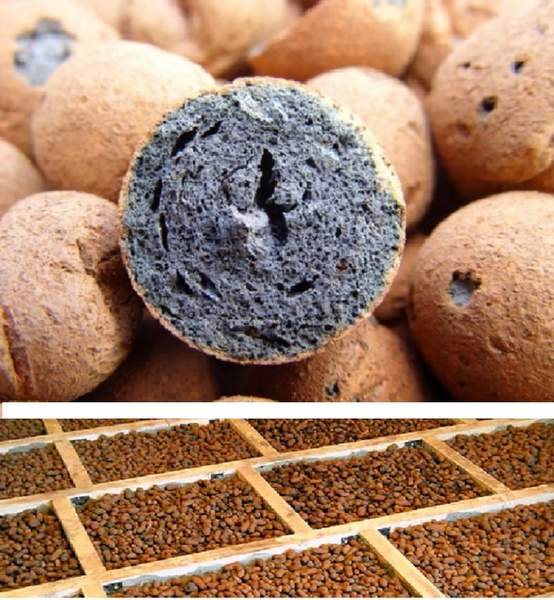

Along with positive features, the material has disadvantages:
- The effectiveness of expanded clay as a heat insulator depends on the thickness of the layer, i.e. filling to a depth of 20-40 cm is meaningless.
- It is necessary to protect the material from the effects of precipitation.
- The best application is the application of overlapping to concrete products. This is due to the fact that monolithic beams are able to withstand high loads, and delay the granulate from spilling onto the second floor.
- When planning work on insulation of the ceiling in a wooden house, it is necessary to ensure the protection of expanded clay with a vapor barrier film. In this case, the PVC film is placed at the bottom and top of the heat insulator. Thus, protection against the effects of atmospheric precipitation is created.
Construction industry experts advise against using expanded clay insulation on a suspended ceiling, hemmed from the lower side (first floor) with beams.
Given the weight load, material volume and structure, there is a high likelihood of a breakthrough in such a structure. In this case, the collapse occurs inside the room.

